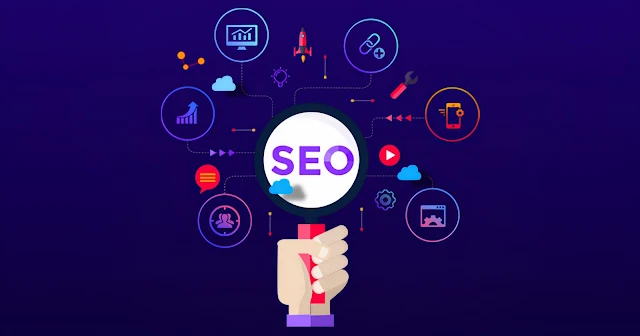On-Page SEO Factors You Need To Know
Table of Content:
- Introduction
- Title Tag:
- Meta Description:
- Header Tags:
- Keyword Research:
- Content Quality:
- Content Length:
- URL Structure:
- Image Optimization:
- Internal Linking:
- Mobile-Friendliness: Responsive Design
- Page Speed:
- Social Signals: Encourage Sharing
- Local SEO: Target Local Audiences
Introduction:
In the ever-evolving landscape of search engine optimization (SEO), on-page optimization plays a crucial role in enhancing your website's visibility, driving organic traffic, and boosting conversions. By mastering these 13 essential on-page SEO factors, you'll be well on your way to improving your website's search engine ranking, user experience, and ultimately, your bottom line.
1. Title Tag:
Your title tag is the first thing users see in search engine results pages (SERPs) and is a critical factor in determining click-through rates (CTRs). Ensure your title tag is:
- Descriptive and attention-grabbing
- Keyword-rich, but not stuffed
- Under 60 characters to avoid truncation
Make your title tags more interesting. If someone search a specific keyword in search engine ,your website title tag must be interesting enough so the user must click on your website link .
2. Meta Description:
Your meta description should make users curious to click through to your page while providing a clear summary of your content. Make sure it's:
- Informative and compelling
- Keyword-rich, but not duplicated from the title tag
- Under 160 characters to avoid truncation
Your Meta Description must be unique.
3. Header Tags:
Header tags (H1, H2, H3, etc.) help organize your content, improve readability, and highlight key points. Use them to:
- Break up content into sections
- Emphasize important keywords
- Create a clear content hierarchy
Must include your targeted keywords in your Title tag and your H1 .
To get more organic traffic.
4. Keyword Research: The Foundation
Before writing an article, make your mind clear about the topic of the article. Then do your keyword research according to your topic . Always target long tail keywords and high CPC keywords.
Thorough keyword research informs your content strategy and ensures you're targeting the right audience. Use tools like Google Keyword Planner, Ahrefs, or SEMrush to:
- Identify relevant, high-traffic keywords
- Analyze competition and search intent
- Inform your content and meta tags
5. High Value Content :
Your content must be high value and unique if you want to earn with your articles. You can get Adsense approval if your content is unique and valuable.
High-quality content is essential for user experience, engagement, and search engine ranking. Ensure your content is:
- Informative, engaging, and valuable
- Well-researched and authoritative
- Optimized for readability and user experience
6. Content Length:
When writing an article always provide details about your targeted topic. These details must be informative ,unique and valuable for your users .
While there's no one-size-fits-all answer to content length, aim for comprehensive content that provides value to users. Generally, aim for:
- A minimum of 700 words for in-depth content
- Concise, scannable content for quick answers
7. URL Structure:
Optimize your articles URL for better SEO . Add your main keyword to your URL so user will easily access your articles.
Your URL structure should be descriptive and keyword-rich. Ensure your URLs are:
- Easy to read and understand
- Free of unnecessary characters and parameters
- Optimized for keywords and user experience
8. Image Optimization:
Optimize you images before uploading to your website.
Image optimization enhances user experience, page speed, and search engine ranking.
Images are visual appeal of your website. Always create your own images . They must be unique and interesting. And you can use many free image optimising tool available on Google .
Ensure your images are:
- Compressed to reduce file size
- Descriptive, keyword-rich file names
- Alt tags and descriptions for accessibility
9. Internal Linking:
Interlinking is an important thing for engagement of your users .
If your articles are interlinked ,your user will be engaged with your articles and will spend more time on you website.
Internal linking helps users and search engines navigate your website, providing context and relevance. Ensure your internal links are:
- Relevant and useful to users
- Descriptive and keyword-rich anchor text
- Logical and consistent navigation
10. Mobile-Friendliness: Responsive Design
A beautiful and clear design of your website will attract your user . Make sure your articles readability must be good .
Your website design must be responsive for both mobile and desktop devices .
With the majority of users accessing websites through mobile devices, a responsive design is crucial for user experience and search engine ranking. Ensure your website is:
- Responsive and adaptable to various devices
- Fast, intuitive, and easy to navigate
- Provides a consistent user experience
11. Page Speed:
Page speed affects user experience, search engine ranking, and conversions. Ensure your website is:
- Optimized for fast loading speeds (under 3 seconds)
- Leveraging browser caching and compression
- Minifying and optimizing code
12. Social Signals: Encourage Sharing
Social media is a key factor now days. Everybody use social media now days . You can drive traffic to your website though social media .
Ensure your website has:
- Visible social sharing buttons
- Encourages sharing and engagement
Consistent branding across social platforms
13. Local SEO: Target Local Audiences
If your business serves a local audience. Like you are selling or offering services locally then optimize your website for local SEO by:
- Claiming and optimizing your Google My Business listing
- Using location-specific keywords and content
- Building high-quality local citations and links
Conclusion
By mastering these 13 essential on-page SEO factors, you'll be well on your way to improving your website's search engine ranking, user experience, and driving more traffic and conversions. Remember to stay up-to-date with the latest SEO best practices and algorithm updates to ensure continued success.
Tags
SEO


